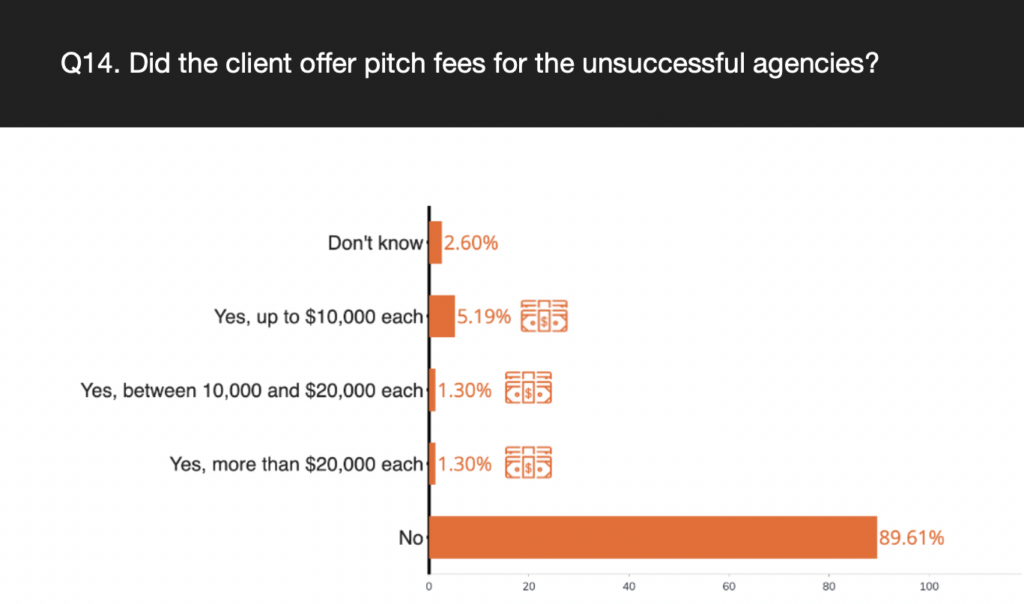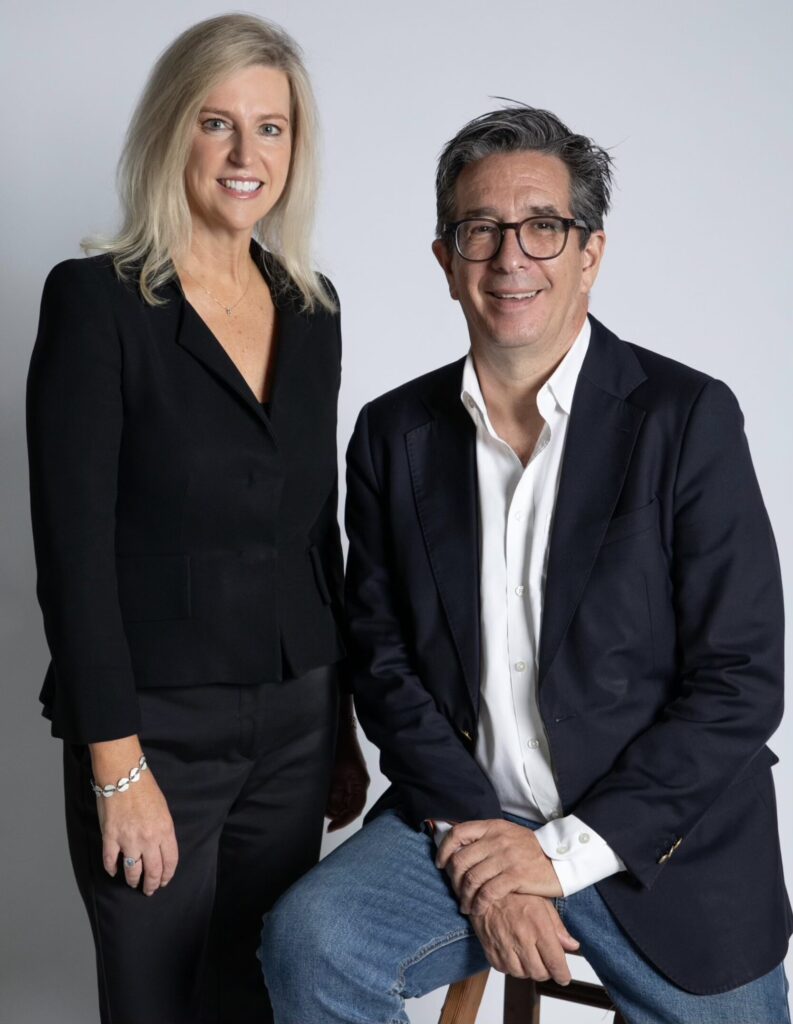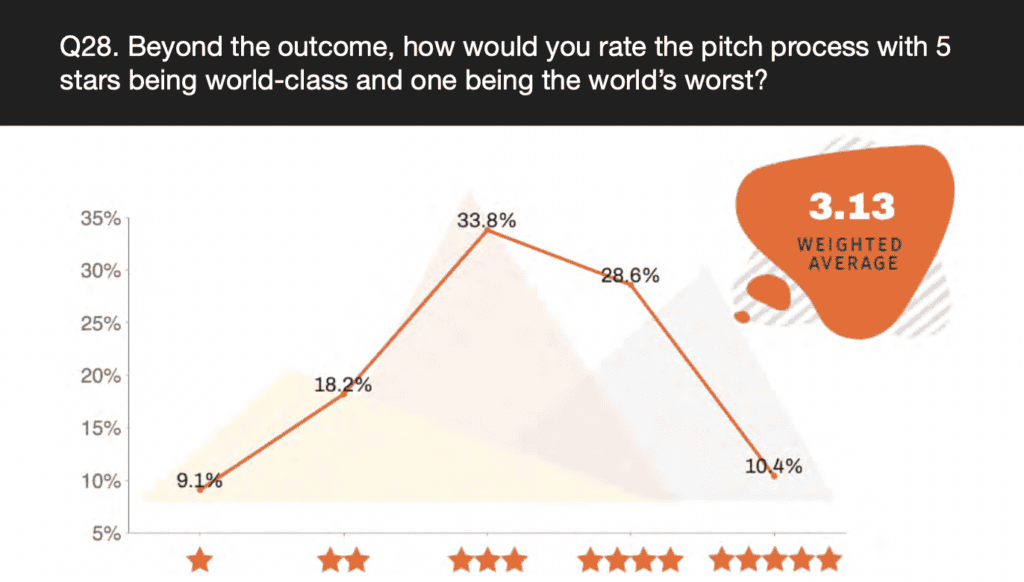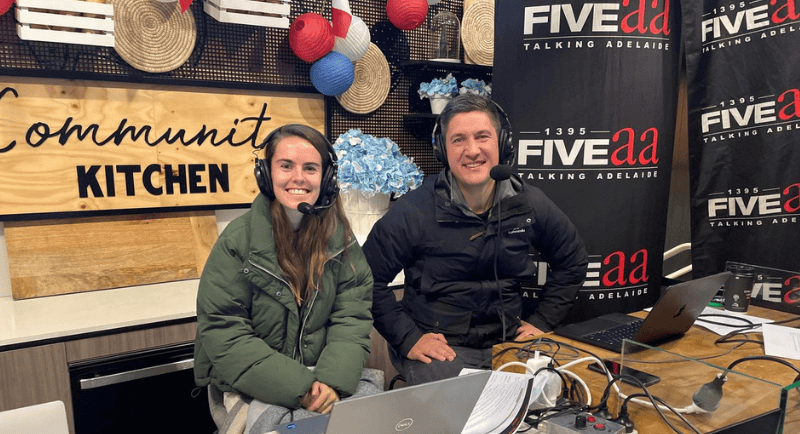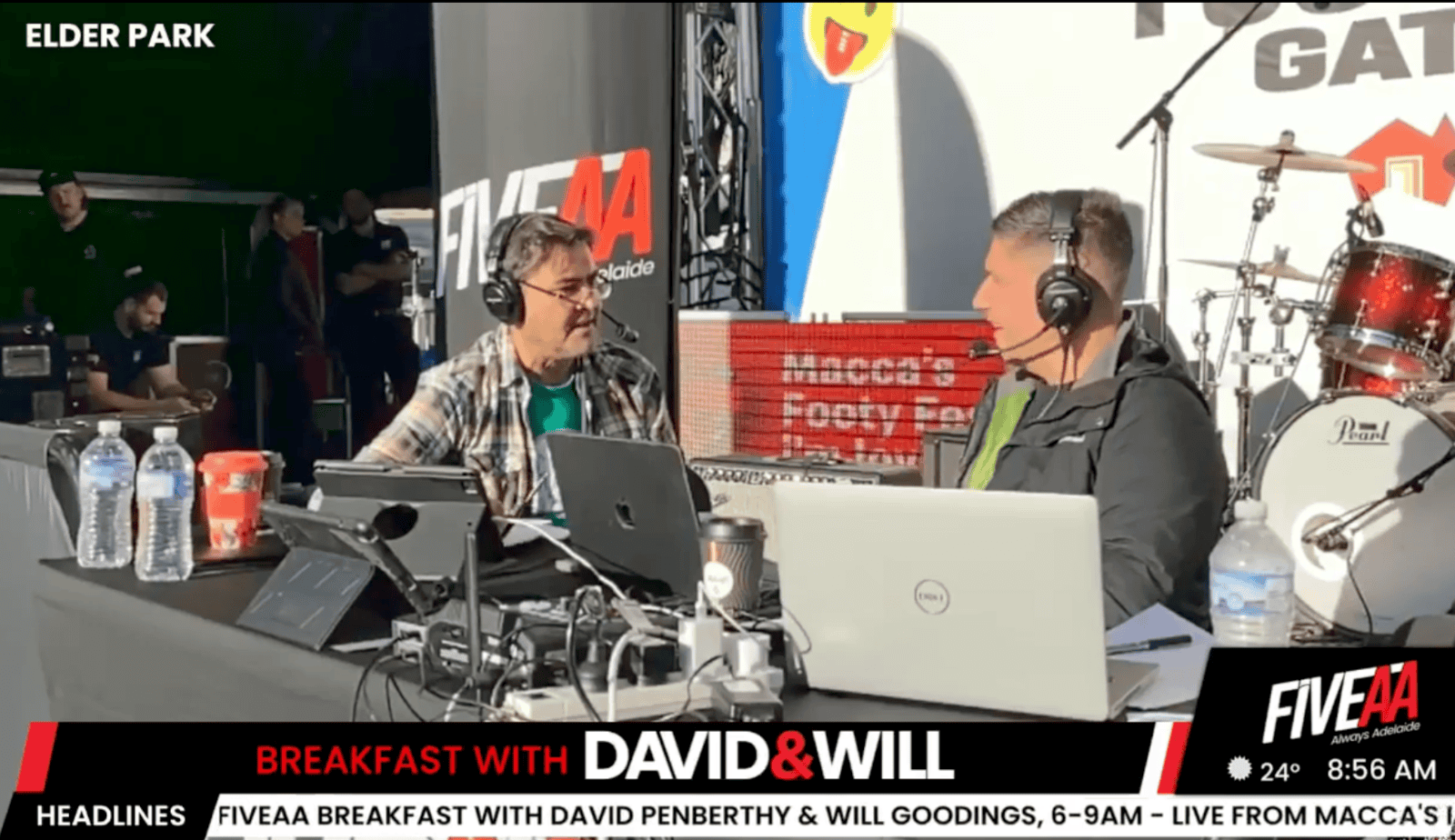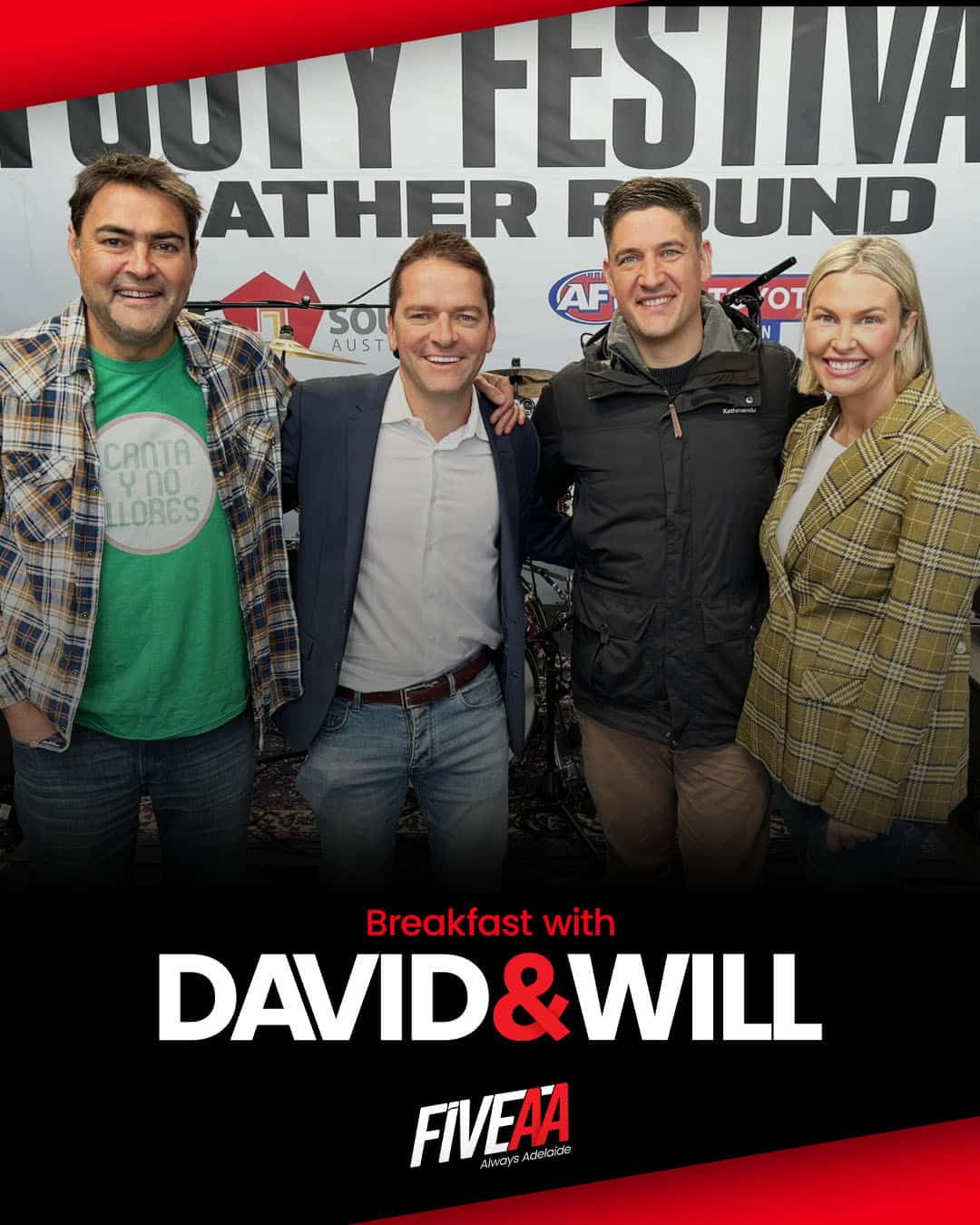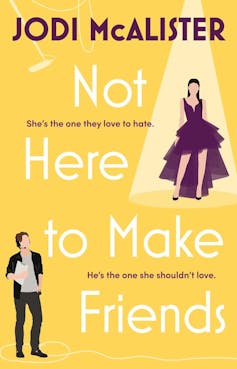Monday April 8, 2024
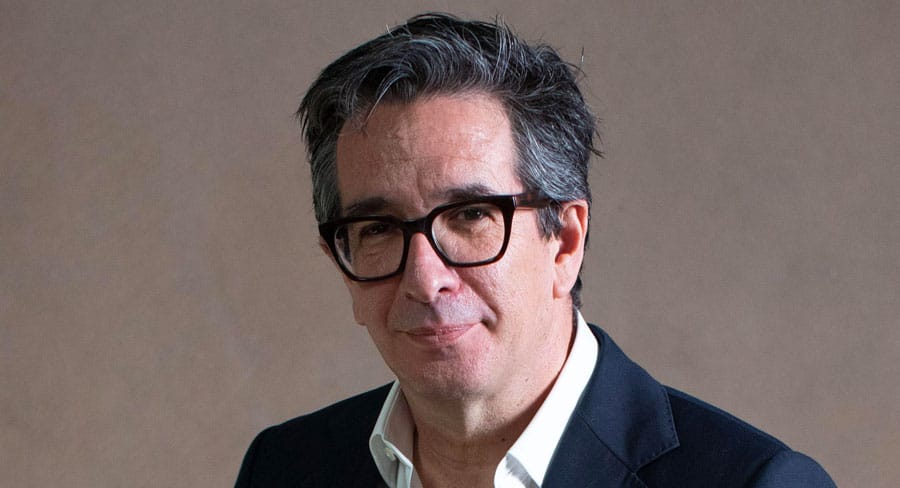
Pitch process 'same one that's seen in Mad Men': Darren Woolley dissects pitching's 'bad name'
The inaugural State of the Pitch report should prompt marketers and procurement teams to “stop boiling the ocean to try and find the right agency,” and industry bodies to create a local Pitch Positive Pledge, Darren Woolley tells Mediaweek.
TrinityP3, Woolley’s marketing management consultancy, released its first-ever State of the Pitch research today, which shows that some pitch lists include 45 agencies, 89% of agencies aren’t paid to pitch, and pitching has an average agency score of 3.13 out of 5.
Woolley says pitches can be run well in many cases, but points out that “when they don’t, it has a huge impact on the agencies and the whole industry to the point that we’ve seen almost hysteria about how the pitch process is broken. The pitch process is broken when it’s not run properly.”
‘Match the pitch process to the requirements’: Saving time and money
The State of the Pitch research found that while there is a range of different requirements for pitches, from a $50,000 project to a $10 million media contract, the process is largely the same for all.
It appears that the industry has adopted a “standard” way of running a pitch regardless of the size of the contract, according to Woolley, which costs everyone involved time and money.
“That means the clients are boiling the ocean to try and find the right agency. This is why pitching has got such a bad name. A lot of agencies are getting really pissed off with being put through the standard pitch process.”
Woolley notes that the industry guidelines don’t consider the complexities of a pitch, which “could be something very small or very big.”
“We need processes that match the size of the prize.”
‘The right investment in media will drive performance’: Efficiency and effectiveness
Marketers and procurement teams often request speculative creative work as part of the creative pitch process, which consists of creating a full campaign based on a brief with two to three weeks to work on it.
Woolley calls this a “big bugbear” among agencies and a “hit or miss” with the work presented, particularly for creative agencies that regularly interact with the client.
“Often, marketers choose who comes up with the best idea. That’s fine for a particular brief. But if you’re appointing an agency for the next three to five years, how many other briefs will they have to crack?”
Meanwhile, media agencies are asked to do media trading exercises, and marketers “demand that the agency prepare a lot of media rates for the next 12 months if not three years. What a waste of time.”
The lowest possible media costs have driven this process, Woolley says. He adds that it should not be about how cheap the media is being bought for, but rather how effective it is in driving sales and marketing performance.
“There’s a mentality of procurement people and marketers that media is a commodity,” he says.
“They should think of media as a value investment; the right investment in media will drive performance, which requires more brains and less brawn.”
‘Informed and constructive discussions’: Improving the pitch process
There is a need for education in the market about the different ways of running different pitches. From doing chemistry checks and meeting with an agency’s clients to doing a paid “pitch in a day” style workshop, Woolley proposes.
Meanwhile, for bigger accounts, Woolley says the process should either be more rigorous and take more steps, or be sped up in order to make a decision faster.
“There are many different ways to run a pitch. It’s just that everyone in the industry falls into the trap of thinking a pitch has a certain structure. It’s not true.
“The pitch process spelled out in the research is the same one that’s seen in the Mad Men series. It’s not like the pitch process has evolved much in the last 50-60 years. But believe me, the industry’s evolved a lot.”
Woolley hopes marketers and procurement teams come away from the research with a refreshed focus on treating agencies with respect.
“The report includes examples of clients, marketers, and procurement primarily treating agencies abysmally. One agency filled out an RFP and sent it off but couldn’t get the client to respond. The agency found out that it had gone to another agency when they read about it in a press release.
“We need marketers, procurement teams, and consultants to agencies are treated with professional respect and dignity. Not treat them like some commodity supplier to be rough-housed and beaten about.”
‘Informational and educational effort’: Taking action
While some industry bodies such as the Advertising Council Australia (ACA), Media Federation of Australia (MFA), Independent Media Agencies Australia (IMAA), and Australian Association of National Advertisers (AANA) can only provide guidelines versus mandate actions, Woolley says they can facilitate further discussion and education about how to run a pitch.
Industry bodies should help marketers by having conversations about different ways of running pitches and what constitute acceptable and unacceptable demands, he continues.
TrinityP3 proposes one solution: an Australian version of the UK’s Pitch Positive Pledge.
The Pitch Positive Pledge was established in 2022 by the Incorporated Society of British Advertisers (ISBA), the Institute of Practitioners in Advertising (IPA), their members, and intermediaries. It is designed to help clients and agencies improve the existing pitch process to improve mental health, cause less wastage, and reduce costs in the industry.
Woolley says local industry bodies could create a similar resource for the industry: “This points out a drastic need for an informational and educational effort to teach marketers, procurement people, and even some consultants how to run a pitch.”
–
Top image: Darren Woolley
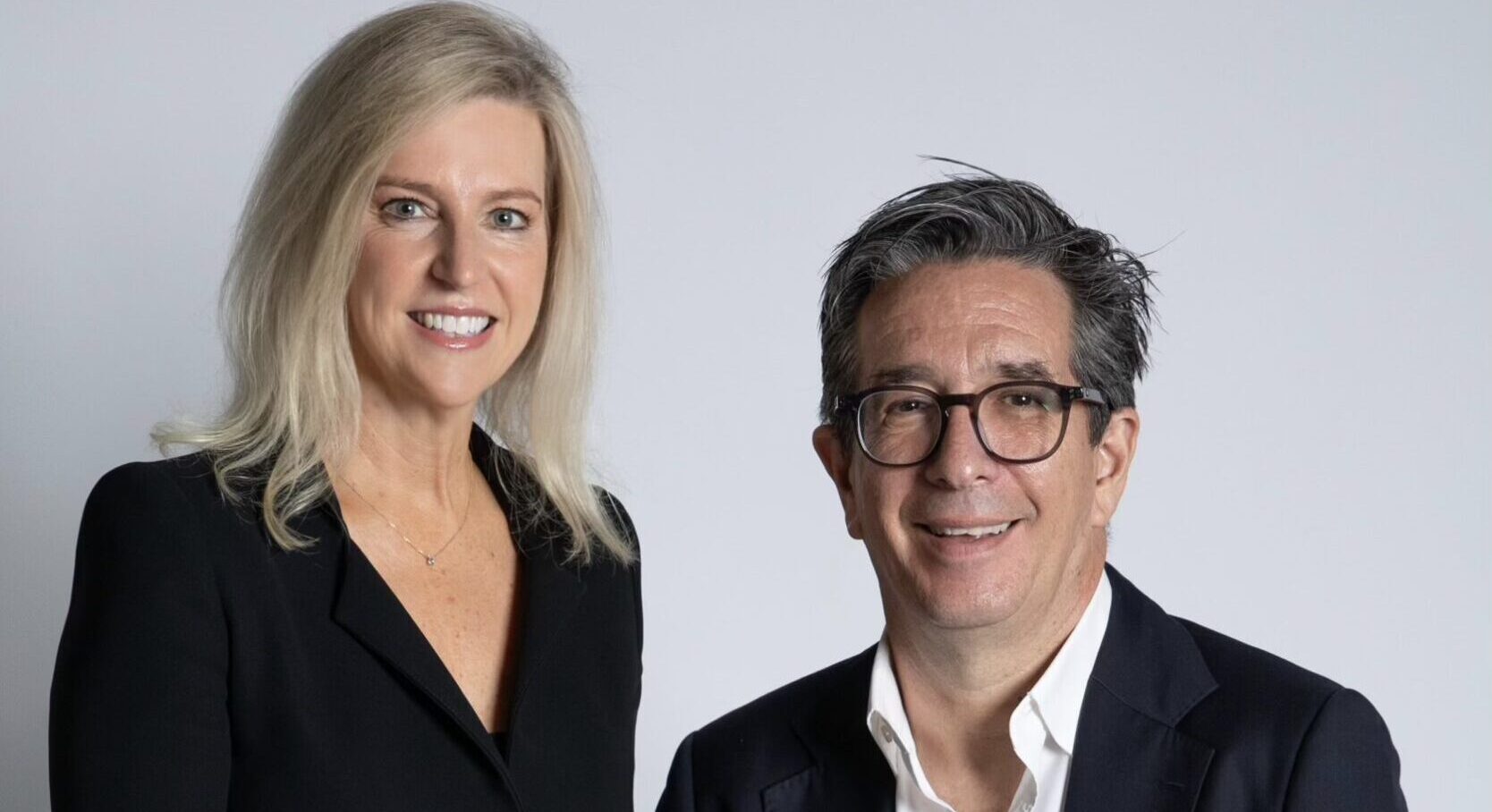
89% of agencies not paid pitch fees: TrinityP3's inaugural State of the Pitch report
89% of agencies unsuccessful in pitches were not paid a fee by the client, according to an inaugural piece of TrinityP3 research, which also documents “examples of clients, marketers, and procurement primarily treating agencies abysmally.”
In its first-ever ‘State of the Pitch‘ report, the marketing management consultancy reported that 5% of agencies were paid up to $10,000 each, only 1% were paid between $10,000 and $20,000, while another 1% were paid more than $20,000.
Darren Woolley, founder and CEO of TrinityP3 Marketing Management Consultancy, told Mediaweek that few marketers were paying pitch fees, and if they were, it was a small amount.
“If you’re asking an agency to develop a full campaign, the out-of-pocket and head-hour costs could be between $50,000 to $150,000, so paying $5,000 or $10,000 can be tokenistic.”
A similar sentiment was shared by an agency respondent, who said when responding to the survey: “The ask to respond to a creative brief means we spent $150,000 in time on this pitch. A lot!”
Another key issue raised in the report was the sheer sizes of pitch lists. One agency respondent noted that 45 agencies were involved in a pitch.
Woolley said: “Some people think it’s a good thing to do because you’re making sure you’re covering the whole industry. But it’s an incredibly time-consuming and a possibly wasteful approach to getting to your shortlist.”
An agency respondent shared a similar sentiment: “Put an online submission in. Never heard a thing from them. Read about appointed agency in trade press eight months later.”
Woolley said of that example: “The report includes examples of clients, marketers, and procurement primarily treating agencies abysmally. One agency was asked to fill in a big RFP; they sent it off but couldn’t get the client to respond. The agency found out it had gone to another agency when they read about it in a press release.”
The report noted that agencies participating in open tenders accounted for 1 in 10 pitches surveyed. “Open tenders are a waste of time,” according to one agency.
‘No one is asking questions about the process’: A proactive pitch approach
The State of the Pitch report aims to take a proactive approach to the pitch process and examine what could be improved.
Over six months, 77 pitches from across Australia and New Zealand, covering 28 industry categories were subject to the survey.
Woolley said that the marketplace is buzzing with reactive discussions and opinions that were “generally negative” about the pitch process.
“But no one is asking questions about the pitch process itself, what’s working and what isn’t working for the agencies.
“That’s why we launched it [the report]. There’s no point in having a conversation about this unless we’ve got some data to actually show what’s going on.”
Issues agencies faced also included no clear objective or direction, no clear communication with the marketer and/or procurement team, and a lack of adherence to the duration of pitches.
TrinityP3’s State of the Pitch report asked agencies to score the process, with one being the worst and five being the best. The average was 3.13 out of 5.
Woolley said that while there were a few fives and ones throughout the survey responses, the overall score was “not great.” He noted that the process “could be a lot better” and that there was also “a big room for improvement here.”
Lydia Feely, general manager of TrinityP3, added that the report showed a significant difference in how agencies scored the process depending on whether marketing, procurement, or an external consultant was running the pitch.
“Sadly, in too many cases, agencies were reporting a lack of ‘table stakes’, the minimum requirements that make sure the client pitching business has a clear and reasonable process that they know they can stick to and which will keep everyone involved informed and respected.”
‘Respectful and rigorous’: Industry takeaways
Woolley said he hopes that with TrinityP3’s insights and data, the industry will have informed and constructive discussions about pitching and explore innovating how pitches are run, and agencies selected.
“By giving people some numbers, I’m hoping this will start a more informed discussion around what we need to do. Saying things like ‘ditch the pitch’ [Mat Baxter‘s infamous catchcry from 2019] is not very helpful because clients will still have to find ways of selecting agencies.
“Whether a client comes to us with a very small project or is spending millions of dollars, we can advise them on how to do it in a way that is respectful and rigorous but not onerous on the participating agencies.”
Woolley is also hoping marketers and procurement teams focus on treating agencies with respect when they take part in pitches. A bad pitch causes “angst and hatred that that agency will go around telling everyone how the pitch process is broken.”
“We need marketers, procurement teams, and consultants to make sure they treat agencies with professional respect and dignity and not treat them like just some commodity supplier to be rough-housed and beaten about.”

James Warburton to leave Seven next week
After nearly five years in the role, Seven West Media chief executive James Warburton will be finishing up next week, on 18 April.
When news originally broke that current chief financial officer Jeff Howard would be moving into the top spot, Warburton advised his intention to step down from the top job at the end of FY24.
More specifically, Seven said the transition would be effective on or before 30 June 2024.
Howard will be presenting the FY24 12 months results in August 2024.
During his time with Seven, Warburton secured an extension of its AFL agreement, a deal that will last until the end of the 2031 season, and is worth $4.5 billion – the biggest broadcast deal in Australian history. The current contract is set to expire at the end of the 2024 season.
He also secured a deal tying up FTA cricket with the network for the next seven years, including streaming for the first time. Under Warburton, the network also secured coverage of the Matildas at the FIFA Women’s World Cup.
During his final months in the role, Warburton has been a vocal member of the group lobbying for changes to proposed sports anti-siphoning laws.
In March, Seven released a consumer-facing campaign urging the government to give Aussies access to free sports content on digital platforms.
The “We are Aussies, of course I want free sport” campaign highlights the details of the current Bill before parliament, which only protects Australians’ access to free sport via broadcast TV but not if they watch TV through the internet – specifically via an app like 7plus.
See Also: Seven ramps up sports anti-siphoning lobbying with consumer-facing campaign for digital access
The leadership transition isn’t the only reason for Seven’s presence in the headlines this week, with the handover coming on the heels of ex-Spotlight producer Taylor Auerbach taking to the stand in Bruce Lehrmann‘s defamation case against Network 10 and Lisa Wilkinson.
The case was re-opened at the eleventh hour after Auerbach provided sworn affidavits that allege the Seven show was provided with thousands of pages of confidential documents that Lehrmann had in an “e-brief” for his criminal trial, but which were not tendered in court.
He also claimed he was asked to “delete any materials that could be damaging for Seven”, and that the network had paid for “perks” for Lehrmann including $10,300 on Thai massages, several expensive dinners, and a $401.83 round of golf in Tasmania.
Auerbach also alleges that in January 2023, “Monies paid by the applicant for illicit drugs and prostitutes… at a brothel in Surry Hills were reimbursed to the applicant by Seven.”
See Also: Copied documents and financial perks: Lehrmann judgment delayed as new evidence emerges

MEAA makes steps towards changing ABC's 'Hunger Games' redundancy system
The Media, Entertainment and Arts Alliance (MEAA) is reporting that it has secured a victory for its members at the ABC following extensive efforts and negotiations with the Fair Work Commission.
A proposal has been presented to the Commission to provide a formal recommendation that would see the ABC made to offer voluntary redundancy opportunities to all potentially affected staff within a division if 10 or more redundancies are sought.
The proposal aims to give employees a say in their future employment prospects. Those considering leaving will have the chance to pursue a voluntary redundancy, while those who stay will have a chance at maintaining job security.
This marks the culmination of over six months of efforts by MEAA delegates.
MEAA continues to advocate for the elimination of what it calls the “unfair Hunger Games redundancy pools system”
Last month, union members and editorial staff at the ABC passed a second vote of no confidence against managing director David Anderson, and other senior managers.
The meeting was held in response to the Fair Work Commission hearings regarding Antoinette Lattouf’s unfair dismissal claim, after she was sacked from her temporary job as host of ABC Sydney’s morning radio show in December.
See Also: David Anderson faces second vote of no confidence from ABC staff
In January, the original no confidence vote was passed 128 votes to three at a national online meeting attended by over 200 Media, Entertainment, and Arts Alliance (MEAA) members.
Also in March, Channel 10 management conceded that the network breached the conditions of the company’s enterprise agreement.
MEAA raised concerns about issues surrounding the way that casual employees were paid – pointing to a breach over the payment of overtime for casual employees, and over failing to give casual employees access to their payslips.
In response, MEAA reported that Network 10 management has begun making payslips accessible and available to casual workers, in line with legal requirements addressing the issue.
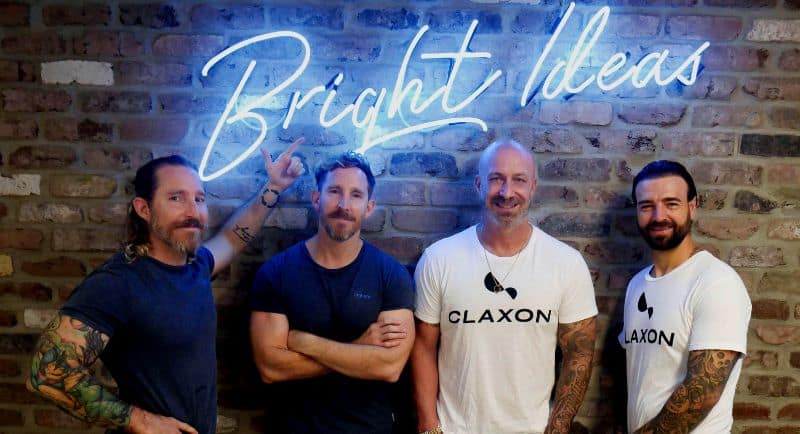
Claxon acquires creative agency Embark
Claxon has made another acquisition in Gold Coast-based creative agency Embark, 14 months after the independent agency acquired Growe Media.
Daniel Willis, founder and CEO of Claxon, said acquisitions are a focus for the agency, especially as it continues its current push into the UK market.
Willis said the deal with Embark, which will see Claxon’s Gold Coast team move into Embark’s headquarters later this month, strengthens the agency’s strong creative offering and enriches its market presence.
Embark, founded in 2003 by brothers James and Phil Coulson, has worked with brands such as Bartercard, BMW, Land Rover, and NSW TAFE.
“The culture they’ve built aligns perfectly with Claxon‘s values and our mission to deliver exceptional client outcomes,” Willis said. I’m looking forward to the energy and experience that the Embark team will bring to Claxon.”
The acquisition sees Embark retain its own brand in the market but assume a co-branded position, with all staff and clients remaining with the expanded agency.
It also provides Embark clients with an end-to-end marketing and advertising offering. The agencies said the combined teams’ increased scale will provide further growth opportunities for staff and clients.
The Coulson brothers will retain their roles as creative directors of Embark and join Claxon’s senior leadership team.
James Coulson said the Embark team is looking forward to starting a new chapter as it joins forces with Claxon: “We think we’re a great match – what they’re great at fits perfectly with what we do, and vice versa. This means we can offer even cooler stuff to our clients and provide our team with some amazing new opportunities.
“Claxon and Embark teaming up is all about taking things to the next level and making sure the future is as bright and exciting as possible for everyone involved.”
Claxon is an integrated agency across media, creative, experience and data, and works with brands including Binance, Dymocks Bookstores, Chempro, Accor Hotels, and Polaris.
News of Embark and Claxon joining forces comes after the Willis-founded agency acquired Growe Media last year.
Growe Media rebranded to Claxon, and founder and managing director, Victoria Budge, remained as Claxon Sydney’s managing partner, retaining an ownership stake in the agency.
See also: Claxon announces acquisition of Growe Media
–
Top image left to right: Phil Coulson, James Coulson, Daniel Willis and Danny Molyneux
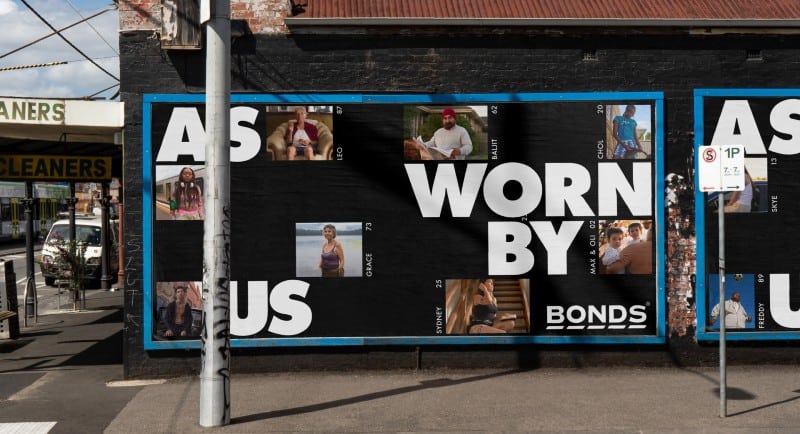
BONDS launches 'As worn by us' brand platform via Special
Bonds has launched its newest brand platform, ‘As worn by us,’ developed by the creative independent Special and brought to life by film production company Wildebeest.
The latest work celebrates the enduring appeal of the Australian apparel brand across diverse age groups and demographics.
The campaign features a mini film series narrated by Australian actress Noni Hazelhurst, portraying Aussies in their Bonds attire in a continuous visual narrative, reflecting the brand’s widespread and deeply ingrained popularity.
In addition to the films, the campaign’s out-of-home (OOH) features over 100 photographic portraits of individuals representing every stage of life, from infancy to centenarians. These portraits are showcased together in a large-scale installation at Melbourne’s Parliament Station.
The campaign, which launched on 7 April, is scheduled to run throughout the remainder of the year, with a presence across TV, cinema, social media, point of sale, and national OOH placements, such as the Parliament Station takeover and a Melbourne tram wrap.
Kedda Ghazarian, head of marketing at Bonds, said the campaign is a reflection of Bonds’ ubiquity in Australian households.
“‘As worn by us’ is a proud reflection of the simple and unique truth that Bonds can be found in almost every Aussie’s undie or sock drawer.” said Ghazarian.
“The campaign is a celebration of these stories, connections and the unique bond we all share – from the littlest newborn bub to the 100-year-old still rocking our humble Chesty singlet.”
Ryan Fitzgerald, executive creative director at Special Group, highlighted the authenticity of the campaign’s portrayal of Australians’ affinity for Bonds: “When it comes to wearing Bonds, there’s often only one-degree-of-separation between us all. Bringing these connections to life took us all over the country.
“So many beautiful folks invited us into their lives and in many cases, stripped down to their undies. Seeing the authentic love out there for Bonds was something to behold and spectacular proof that it really is the brand as worn by us.”
Special’s public relations arm Special PR was chosen last month as the partner for PepsiCo brands, including Pepsi, Red Rock Deli, and Smith’s, expanding Special Group Australia’s role with the global food giant.
Former Havas managing partner, Alex Bryant, launched Special PR in July last year.
See also: PepsiCo appoints Special PR for Pepsi, Red Rock Deli, and Smith’s
Credits:
Client: BONDS
General manager, marketing: Kelly McBride
Head of marketing: Kedda Ghazarian
Brand manager: Edwina Moller
Creative agency: Special Australia
Partner/CEO: Lindsey Evans
Partners/CCO: Julian Schreiber & Tom Martin
Partner/CSO: Bec Stambanis
Executive Creative Director: Ryan Fitzgerald
Head of Strategy: Nathan Rogers
Strategist: Laura Wiseman
Creative Director/Creative: Toby Moore
Creative Director/Creative: Kia Heinnen
Creative: Alexandra Antoniou
Team Lead: Georgia Newton
Business Director: Marnie Dunn
Business Manager: Ayesha Kithulegoda
Head of Film & Content Production: Sophie Simmons
Lead Producer: Charlotte Wren
Design Director: Sabine Schwarz
Designer: Sarah Ristevski
Film production
Production company: Wildebeest
Director and photographer: Luis Gerard
Cinematographer: Edward Goldner
Additional photography: Levin Mundinger
Managing director: Jarred Osborn
Executive producer: Josie Baynes
Producer: Rachael Morrow
Digital assistant: Darcy Scales
Stylist: Bridgette Hungerford
Casting
Casting company: Studio P
Casting director: Peta Dermatis
Post production
Editor: Stewart Arnott
Colourist: Wade Odlum and James Graham, Alter Ego Post
Colour assistant: Daniel Saavedra, Alter Ego Post
Producer: Spencer Butt, Alter Ego Post
Online production: Manimal Post
Online operators: Denzil Heeger & Ryan Brett, Manimal Post
Post producers: Hannah Byrnand & Rachael Vowles, Manimal Post
Photography retouching: Visual Thing
Sound production
Sound house: Rumble Studios
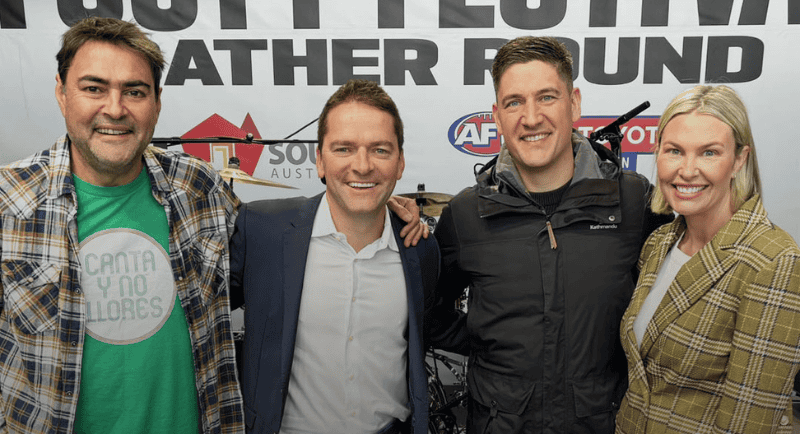
Inside breakfast talk radio: Meet the David and Will team at Adelaide's Fiveaa
Mediaweek visited David Penberthy and Will Goodings in the Fiveaa studios last Thursday. Today, we look behind the scenes and detail the support team putting the breakfast show to air.
Who’s who at Fiveaa breakfast
Lucy Lokan: Executive producer
Sam Daddow: Assistant producer
Tom Rehn: Sports reporter
Jade Robran: Roving reporter (three mornings a week)
Brooklyn Munn: Digital producer breakfast and drive (Facebook/YouTube live-streaming and social media)
Tim Ashdown: Digital producer (works across all Fiveaa shows)
Kendall Brettig: Newsreader
Graham Goodings: Newsreader
Jess Adamson: Newsreader (Fridays)
Executive producer Lucy Lokan arrives at the Fiveaa office between 4am and 4.30am. The show is live on air at 6.05am after the 6am news bulletin. This morning, Lokan was also doubling as news presenter as part of her role as a “makeshift newsreader”. Lokan started in sales at Nova Entertainment before spending time as a breakfast producer and newsreader, then moving into the EP role.
Sam Daddo also hosts an early breakfast show at 5am for 30 minutes on weekdays. He moved to Fiveaa from SCA towards the end of Covid, at the start of 2022.
Tom Rehn also does a sports half-hour program from 5.30am. In addition to well over a decade at Nova Entertainment, Rehn is a regular on-air at Nine Adelaide, where he presents sport on Nine News Adelaide.
Jade Robran was hosting afternoons at Fiveaa for two years. She stepped away from the shift toward the end of 2023. She joined David and Will early this year as a roving reporter. Robran has also worked for Seven as a sports presenter and on Sunrise.
Brooklyn Munn worked through the Nova Entertainment ranks from sales and reception to her digital role.
Tim Ashdown celebrates a decade at Nova Entertainment this year after working for the South Australian Tourism Commission.
Supercharging the newsroom
Newsroom makeover: Adelaide journalists Jess Adamson and Graeme Goodings were added to the Fiveaa breakfast newsroom earlier in 2024. Goodings presents bulletins on the half hour from 5:30am to 9am on Tuesday, Wednesday, and Thursday mornings.
Will Goodings’ dad Graeme was previously the Saturday newsreader at the station for the past five years. This year, he moved into weekdays. The news veteran was the Seven News presenter in Adelaide for over 30 years.
Adamson presents news bulletins for breakfast on Friday mornings.
Kendall Brettig is a breakfast newsreader on Monday mornings each week.
Speaking earlier this year about the changes, Fiveaa station manager Craig Munn said: “The addition of two of Adelaide’s best and proven journalists will strengthen our breakfast team and allow us to continue delivering Adelaide’s most connected, relevant and news-driven breakfast program to our listeners.”
Streaming breakfast video
Lokan told Mediaweek the breakfast show is live-streamed for the full three hours on both Facebook and YouTube. “We call it our Sunrise. We can do a news ticker, and we can add weather graphics.”
Fiveaa also streams its drive show with Stephen Rowe and Tim Ginever.
The David and Will full-show podcast is published daily. There are also separate edits of the feature interviews from each show published online.
Breakfast team contributors
Fiveaa breakfast under David and Will has assembled an impressive team they lead onto the airwaves each week.
In no particular order, they include Matthew Abrahams (formerly ABC Radio), Philip Corey (The AFR), David Koch (finance and footy), Stacey Lee (formerly ABC Radio, now Fiveaa afternoon host), Jade Robran (roving reporter ex-Seven), and footballers Josh Rachele (Crows) and Dan Houston (Port).
The station parted company with breakfast contributor Jon Blake last year. He hasn’t been replaced directly on breakfast. Penberthy noted they have filled the show with more news content since then.
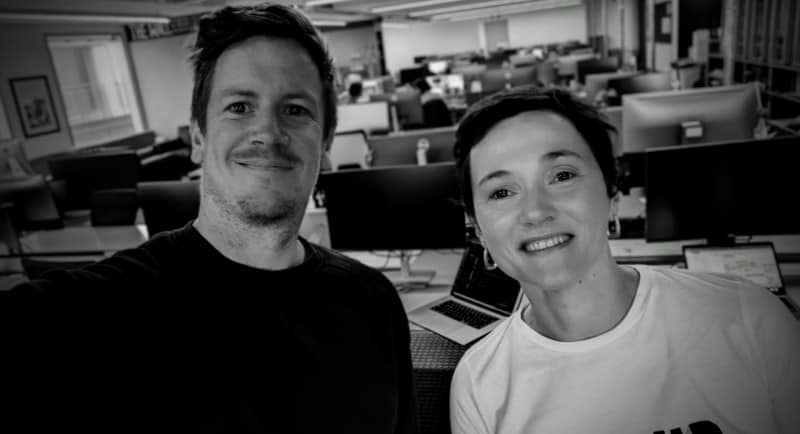
Ogilvy Melbourne snags Special's Chris Andrews as group CD
Ogilvy Melbourne has tapped Chris Andrews as group creative director. Moving from his role as creative director at Special, Andrew also brings extensive experience from agencies including CHE Proximity, DDB, BMF, and the agency formerly known as JWT.
This appointment follows closely on the heels of another key hire, with Fran Clayton, former chief strategy officer at DDB Sydney, joining Ogilvy as chief strategy officer for Australia and New Zealand, as Mediaweek revealed last week. Ogilvy confirmed Clayton’s appointment, and said it will make further comment this week.
See also: Fran Clayton leaves DDB Sydney for Ogilvy AUNZ CSO role
Hilary Badger, Ogilvy Melbourne’s executive creative director, said: “Chris comes with an impeccable track record of great ideas across many categories in Melbourne’s best agencies.
“I’m absolutely thrilled to welcome him to Ogilvy, as we continue to build a very strong, globally competitive creative offering here in Melbourne.
“His approach is a great match for the super high ambition of our clients for impact and creativity on the world stage.”
Andrews added: “Meeting Hilary for the first time, I was won over by her vision and ambition for Ogilvy Melbourne. I’ve now seen first-hand that the creative goals of the agency and its clients are very much aligned.”
The addition of Andrews to Ogilvy Melbourne’s creative team complements the agency’s recent expansion efforts, which have included strategic hires such as Ant Simmons as group creative director in October.
Ogilvy’s creative capabilities have seen further growth over the past year, with key appointments and promotions across various divisions, including the joint appointment of Clark Edwards and Bridget Jung as executive creative directors for Sydney, and the promotions of Miriam Wells and Nina East to key creative roles within the agency.
–
Top Image: Chris Andrews
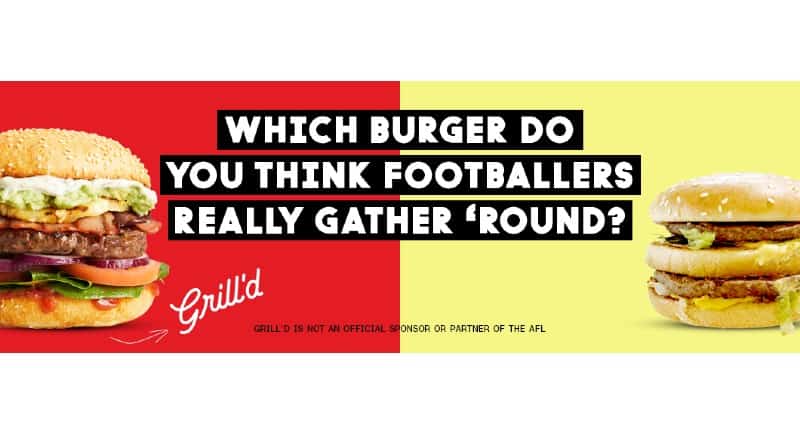
Grill'd takes a jab at Macca's in latest work for Gather Round
Grill’d Healthy Burgers has launched a campaign for the second annual ‘festival of footy,’ AFL’s Gather Round event in Adelaide, which will be broadcast this weekend on Fox Footy (available on Kayo Sports and Foxtel).
See also: Fox Footy and Seven are the key players as all media descend on Adelaide for Gather Round
The Grill’d campaign aims to celebrate the Aussie sport by highlighting its commitment to delicious, healthy food that makes athletes and Australian consumers alike love Grill’d, while also taking a cheeky dig at one of the event’s major brand partners, McDonald’s.
“We know that footballers and professional athletes absolutely love Grill’d, not only because out burgers are delicious, but because of our superior nutritional benefits,” said the restaurant chain‘s chief marketing officer, Julian Dunne.
“Delicious, healthy food is part of our DNA, and as an iconic Australian brand, we will continue to communicate and celebrate this.”
The ads will be rolled out through targeted large-format out-of-home (OOH) media across the Adelaide CBD.
The Gather Round event has emerged as a major success in Australian sports, attracting significant attention from both media entities and brands. Major names like McDonald’s, Toyota, and Telstra stand out among those with the biggest presence this weekend.
McDonald’s, a partner of the AFL since 2014, is showcasing its Fry-Thru, created by Akcelo in 2023 for the Women’s World Cup. The Fry-Thru was joined by a large Golden Arches swing, while Macca’s tents handed out collectible player cards, attracting long queues of eager attendees.
Telstra’s Footy Country Print Press lets fans personalise their guernseys with names or nicknames, building on The Monkeys’ successful This is Footy Country campaign. CMO Brent Smart has since appointed the bespoke model +61, made up of TBWA, Bear Meets Eagle on Fire, and OMD, to handle the country’s biggest advertising account.
See also: On the ground at Gather Round: Macca’s, Telstra, and Toyota’s activations
Credits
Simon Crowe: CEO and founder
Julian Dunne: CMO
Lucy Fisher: Head of brand
Mark Peters: Creative director
Harriet Blue: Channel Performance Manager
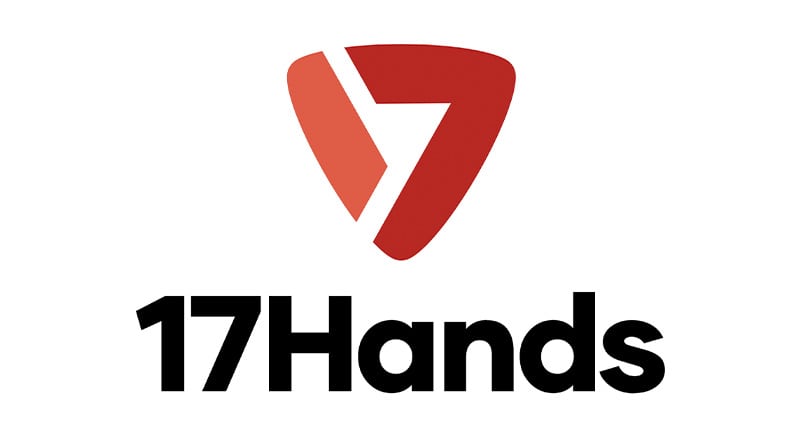
17Hands: New commercial sponsorship brand from Medium Rare and PHAR Partnerships
News Corp Australia‘s Medium Rare Content Agency and commercial sponsorship specialists PHAR Partnerships have teamed up to introduce a commercial sponsorship venture called 17Hands.
17Hands merges the storytelling and content monetisation powers of Medium Rare Content Agency with PHAR’s global reach and track record in optimising sponsorship prospects.
Chris Joy, head of 17Hands at Medium Rare Content Agency, said the team will focus on traditionally underutilised commercial sectors such as transport, leisure, retail, mobility, and education.
“This is not just about sponsorship, it’s about transformation. We want to bring innovation and creativity to sectors that haven’t traditionally embraced sponsors. 17Hands is the bridge between untapped potential and brand opportunities,” he said.
PHAR Partnerships has pioneered these brand partnerships globally for over a decade, with notable projects including the Santander London Bike Hire Scheme and the HSBC Rain Vortex at Jewel Changi Airport in Singapore.
Simon Hawk, head of 17Hands at PHAR Partnerships, highlighted the platform’s capacity to introduce new revenue streams for rights holders.
“With 17Hands, we are encouraging businesses which are not in entertainment-focused sectors to think differently about their marketing. We are opening up a myriad of benefits and commercial opportunities in places where they never previously existed,” Hawk said.
The foundation client of 17Hands, Beam, boasts 2 million registered users using its fleet of 14,000 e-scooters and e-bikes across Australia and New Zealand. Sponsorships on the Beam platform provide brands with a platform to showcase their commitment to sustainability, health, wellbeing, and carbon offset initiatives.
Beam general manager (ANZ) Tom Cooper said: “17Hands has enabled us to collaborate with like-minded brands, bringing a value-add to users of the Beam service, and enabling brands to connect with residents of the cities we operate in via exposure on Beam’s platform and vehicle network.”
17Hands has offices in Sydney, Melbourne, Adelaide, and Auckland.

Caspar Yulli: New Balance's resurgence from daggy to desirable
By Caspar Yulli, senior strategist at AFFINITY
Remember the Crazy Stupid Love flick from 2011? And that scene where Ryan Gosling slaps Steve Carrell in the face for wearing 407s and then throws them over a railing?
The story goes that little moment caused sales to fall almost immediately. And as a result, New Balance was in danger of losing its position as the fourth-largest shoe brand in the market.
What followed was one of the biggest marketing turnarounds of the last decade. And curiously you won’t find it in any Effie entry. But NB’s journey towards popularity and success is a fascinating story of how culture has the power to make or break a brand.
Smelly sneakers
New Balance’s original appeal was pale, male and stale.
It was a dad joke. And definitely not on the radar of any new or younger buyers.
According to Jacques Slade, sneaker aficionado, “I could walk in my neighbourhood on Saturday morning and see old white guys out mowing their lawns in a pair of New Balances.” And while dads are lovable, they’re not going to keep your brand alive.
The second problem New Balance faced is that its appeal extended to very limited wearable occasions. Think running, taking the kids to football, and yes, mowing the lawn. Other, cooler brands were owning and expanding into celebrities, outdoor wear, and high fashion.
The other problem was that New Balance had historically under-invested in advertising and sponsorship. The owner, Jim Davis, believed in being known for technical performance instead of big-ticket athlete sponsorships.
It’s not like NB didn’t have technically excellent products – the 574, the 990, and the W320 were all great shoes. It’s just that no one knew about them, and they were being outgunned by the deep marketing pockets of Nike and Adidas.
Stepping it up
Unlocking new audiences started with cross-brand collabs, the first of which was with the hot streetwear brand Aimé Leon Dore.
The ALD 550s became a hit and inspired a slew of partnerships with Comme des Garçons, Joe Freshgoods, and Rich Paul. New Balance quickly became adept at picking collaborations with brands with credibility and currency with the new audiences they wanted to attract.
The key to successful collabs was in part due to a new and culturally diverse team. Yuron White, vice president of Global Lifestyle, calls it the most diverse team he’s ever worked with: “I think we’re helping to unlock this brand to see even bigger things than where we’ve been in the past.” It made sense – to attract a different audience, New Balance also needed a different perspective from its marketing team.
NB also ceded control of the product and marketing to its collaborators. The team understood that its collaborators had all the skills they didn’t and it gave New Balance the power and control to execute its vision. Bold campaigns like actor Jesse Williams pouring water into crystal glassware on a mossy tree stump or Joe Freshgoods’ ruminations on Chicago summertime helped shift perceptions. And new product developments like the whistle on the 574 Yurt helped solidify its new street cred.
In a more traditional move, the brand also increased its marketing investment by 37% from 2019 to try and keep pace with its competitors. Clearly, New Balance had hit a growth ceiling that product innovation alone could not overcome and needed more investment to kickstart growth.
There is no doubt other factors contributed to New Balance’s ascendance. No turnaround of this size happens in a vacuum. But clearly, the brand’s custodians saw the change they needed to create and followed that through with dogged determination in order to realise New Balance’s hard-won street cred position.
See also: Angela Smith: Not taking risks is the riskiest choice of all

G Squared appoints AKQA's John Phung as head of data and analytics
G Squared, a digital consultancy based in Sydney, has announced the appointment of John Phung – the former data strategy specialist at AKQA, Digitas, and dentsu – as its inaugural head of data and analytics.
The firm serves a diverse client base including Mirvac, Mitsubishi Electric, Meriton, Bunnings, and Specsavers, integrating paid media, SEO, and web services.
See also: G Squared strengthens paid media and search offering with two senior appointments
Phung moves from his position as the lead data marketing specialist at AKQA, managing data-driven strategies for marketing technology and communication programs.
He also held senior positions at Digitas and Dentsu, most notably as the national analytics manager for Amnet, the trading desk for the Dentsu network.
In his new role, Phung will spearhead G Squared’s efforts in data analysis and reporting across paid media, SEO, and web platforms.
His responsibilities entail collaborating with consultants to furnish clients with strategic insights, particularly in optimising investment decisions through best-practice attribution models spanning the entire digital marketing spectrum.
“Having worked for a number of large multinational networks in recent years, I’m looking forward to bringing my experience to one of the leading independent digital consultancies in the country,” said Phung.
George Photios, co-founder and director of G Squared, said: “John’s hugely experienced and aligned with our client ambitions and those of the agency.
“As we continue to innovate and drive superior outcomes for clients, we recognised an opportunity to leverage and enhance our current data and analytics capabilities that will deliver enhanced returns on their marketing investment.”
Most recently, the company unveiled Burrow, a dedicated 24/7 community management and social monitoring agency aimed at mitigating online brand risk.
See also: G Squared mitigates online brand risk with its social monitoring agency Burrow
Phung’s appointment also follows the company’s December announcement of hires aimed at bolstering its paid media and search services.
Last year, G Squared revealed Steph Hasouros would join its team as the head of paid media. Ishita Sehdev was also hired as the manager of the SEO consulting team.
–
Top Image: John Phung

Villains, influencers and a sweet bisexual mechanic: Jodi McAlister’s rom-coms borrow and bend reality TV tropes
By Beatrice Alba, lecturer, School of Psychology, Deakin University
Anyone who has watched The Bachelor will recognise many familiar motifs in Jodi McAlister’s Marry Me, Juliet trilogy – including a splashy, dramatic villain and titles that borrow from reality TV tropes: Here for the Right Reasons, Can I Steal You for a Second? and Not Here to Make Friends. Fans will feel an instant connection with this rom-com series, recently recommended in the New York Times (whose romance columnist “reveled in” the latest instalment). I predict they’ll fall in love with it, as I did.
McAlister, a romance academic whose expertise includes The Bachelor, expertly recreates the journey viewers will be familiar with, with only minor details tweaked. The villainous character of Lily Fireball might even be vaguely reminiscent of a highly entertaining contestant with a similar bluntness and unique moniker – Vanessa Sunshine – from season 6 of The Bachelor Australia.
Jodi McAlister’s Lily Fireball is ‘vaguely reminiscent’ of Vanessa Sunshine from season 6 of The Bachelor Australia.
These three books centre on one season of the fictional reality dating show, Marry Me, Juliet, where a line-up of female contestants vie for the heart of one “Romeo”. The show’s host, Tom Zelig, distributes date cards and guides contestants through Necklace Ceremonies held at the end of Last Chance Parties. Contestants are eliminated when they do not receive a necklace.
Reality TV viewers will delight in the behind-the-scenes experience. Those who watch The Bachelor as a “guilty pleasure” and are critical of some of the more problematic aspects of the reality dating show will also find gratification.
The storyline in each book sensitively considers problems around diversity and representation on reality TV, including issues of sexism, racism, and biphobia. One character even gives voice to common criticisms of the reality dating show: “It’s heteronormative, it’s misogynistic, and on top of that, it’s garbage.”
Despite turning a critical (but loving) lens on the reality show, the novels don’t reveal any evidence to suggest it is inherently misogynistic. This may be because there is nothing to suggest any sexism inherent in the format of the show, beyond what occurs in heterosexual romance more generally.
And while the novels don’t overtly subvert the norms around heterosexual romance, they tell stories of romance that are more egalitarian and unscripted than what we usually find. The central characters, including the Romeo, neither expect nor demand compliance to sexist norms in their romantic encounters.
The series is set at the very beginning of the COVID pandemic – the country is going into lockdown just as Marry Me, Juliet begins filming. Each book follows the same season of the show, but rotates the narration, so we see it through various characters’ perspectives. While each novel is complete within itself, a fuller story of the cast and season builds with each subsequent novel.
Influencer ambitions
The first book, Here for the Right Reasons, introduces us to Cece, who applies to be a “Juliet” during a drunken night with friends. She receives an offer to be a contestant just as the pandemic looms and she finds herself desperate for cash.
Cece is definitely not “here for the right reasons”, as the reality TV trope goes. She’s there to solve her financial problems by gaining Instagram fame and the sponcon (paid social media content) opportunities it will bring. She even dares to dream of starring in her own season of Wherefore Art Thou Romeo?, or its spin-off, Juliet on the Beach.
But hopelessly nervous Cece barely has a chance as a Juliet, let alone as an Instagram influencer. Very much an underdog, she struggles to speak when the cameras are on her.
Cece fumbles through her first meeting with the Romeo on the gravel driveway and fails to make a good impression. After being eliminated in the first Necklace Ceremony, Cece dramatically faints and is literally swept off her feet by the Romeo.
A sudden tightening of pandemic restrictions means eliminated contestants end up being forced to stay on premises. As Cece develops a friendship with the Romeo, he gets to know her vulnerabilities. “You’re a tricky one, Cece,” he observes. “Most people have secret sensitive sides underneath tough exteriors, but you’re the other way around. You’ve got a secret tough exterior.”
Cece grew up in group homes and foster care and has learned to fade into the background. McAlister convincingly presents her experiences of adversity without seeming trite or inauthentic.
As it turns out, the Romeo (the first one of colour) has vulnerabilities of his own. He’s an Olympic athlete determined to present a positive image while also managing panic attacks. His experience provides insights to the challenges faced by people of colour to achieve representation in mainstream media, and the pressure to “get it right” when they do.
The journey towards the Marry Me, Juliet finale is an engaging tale of missteps, where love doesn’t happen at first sight, and sets the scene for the subsequent novels.
Bisexual mechanic ‘wifey’
The second book, Can I Steal You for a Second?, is told by Amanda, a bisexual mechanic who applies on a whim after a sleazy customer suggests she go on Marry Me, Juliet because she’s “hot enough”.
Superficially, Amanda could be just another token blonde, but her kindness and warmth establish her as a potential “wifey” – the contestants who stand out not through sexiness and chemistry, but by displaying the characteristics seen as desirable in a future wife. She’s also highly conscientious and very prone to crying.
McAlister takes us beneath the surface, allowing readers to see Amanda’s complexity. For example, she fears being outed on the show, due to the poor treatment previous bisexual contestants on the show have experienced – and not wanting to be reduced to her sexuality. This is convincingly portrayed.
Amanda is drawn to Hero Nurse Dylan, her fellow contestant and best friend in the Juliet Villa, who always stands up for herself and others – which she admires and envies. Her attempts to suppress her attraction along with her sexuality are a running tension.
Brooke Blurton came out as bisexual on Season 6 of Australia’s The Bachelor.
We also witness Amanda battling her demons as she obsesses over her ex-partner Jac, whose voice still rings loudly in her head. Amanda’s inner world is shrouded by intrusive thoughts about what Jac would say if she were observing Amanda now:
That was how she saw me. How everyone here saw me. Insubstantial. Childish. Ridiculous. “When you told me you were a mechanic, I thought you’d be this hardass, carving out a space for herself in a male-dominated industry,” Jac said to me once, not long before she ended things. “I didn’t realise you were mechanic Barbie. Isn’t there anything underneath the surface, Mandie? Don’t you have any hidden depths?”
Amanda’s story is one of self-development, from a drifter to someone who carves her own path: Mandie 2.0.
The villain we love to hate
In the final book, we are tantalisingly led into the mind of Lily Fireball, the series’ paradigmatic over-the-top villain. Throughout the trilogy, her antics provide the thrills many reality-TV viewers tune in for – the bad-mouthing, the raging narcissism and the hardcore drama. She’s the woman audiences love to hate.
With her diva attitude, the network parochially casts Vietnamese Lily as the “spicy meatball”. But Lily Fireball has an agenda of her own, and soon becomes the antihero. McAlister skilfully weaves in the subtle (and sometimes not so subtle) racism and sexism experienced in the workplace by an Asian-Australian woman.
Lily, we discover, is the estranged best friend of Marry Me, Juliet’s gruff, overworked producer and showrunner, Murray. In this novel, we are also taken into Murray’s perspective. Unsurprisingly, we discover he fancies himself to be a master manipulator, tactically pushing the contestants’ buttons in order to provide the drama.
But he finds himself confronted with a show going off the rails, and the heat of Lily Fireball. Despite all their best efforts to prevent it, the producers and cast find themselves faced with the possibility of having to air a Very Special Episode about racism.
While Lily and Murray might be manipulative psychopaths, they are trying to do the right thing for diversity and representation on the show. This book deftly addresses how a mainstream production can grapple with problems of racism, within both the cast and the upper echelons of the business.
Love rooted in friendship
When we watch reality TV, we don’t know what the actual “reality” is. But in these books, we’re taken behind the bravado, into the contestants’ vulnerability and humanity.
Perhaps the most significant thread in the Marry Me, Juliet series is friendship – not just as an alternative to love, but as fundamental to love.
It shows what love is: being noticed, being seen, being listened to, being understood, being appreciated and being admired for inner qualities. And McAlister contrasts this with all the things love isn’t, like superficial appearances or merely looking good “on paper”.
For those who like The Bachelor, but are bothered by its lack of diversity and vanilla flavour, this book will deliver a far more entertaining and enlightening ride than the real thing.![]()
This article is republished from The Conversation under a Creative Commons license. Read the original article.
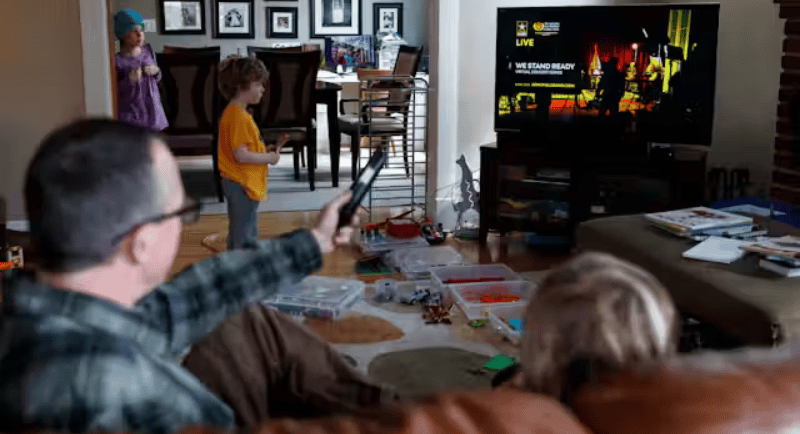
Kids and ‘bad’ news: how can parents safely introduce their children to news and current affairs?
While much attention has been drawn to the detrimental impact of violent video games on children’s developing brains, there has been relatively little discussion regarding the negative effects of news and current affair programs children are exposed to.
When people consume news and current affairs, it’s hard to escape tragic events, from natural disasters, acts of terrorism, and events that include loss of human life.
But do we stop to consider what distressing media is doing to our kids?
How children are impacted
Research undertaken by the Audience Research Department of the Netherlands Broadcasting Corporation found young children who are exposed to news and current affair programs can be impacted so much that they start viewing the world as a scarier place. Research was undertaken through random telephone interviews with 537 Dutch children, with 48.2% of respondents stating they a fear reaction to watching adult news.
The study found children aged between 7-12 were most afraid of interpersonal violence and natural disasters such as fires, accidents and other disasters.
Researchers from the study even found children’s symptoms are like a trauma response – including intruding thoughts (memories that pop into a child’s head, nightmares, repeated discussion around events), avoidance (refusal to talk about news events, or to participate in school activities) and changes to arousal and reactivity (increased irritability and anger outbursts, difficulties in concentrating).
Even subtle exposure needs to be monitored
Even when children are playing in the background, if adults have the news on, children can be listening in.
Children under the age of seven might not understand the content, which can cause confusion, therefore raising worry and anxiety. This is because children under the age of seven do not have the brain function to mentally manipulate information, and can’t see things from another point of view.
Older teens, meanwhile, generally gain much of their news content from the internet and social media, meaning some parents are not aware of how much, or what, they are exposed to. However, due to their age, they are able to have a greater understanding of different perspectives.
Getting the balance right
According to psychological therapist Annie Gurton, different age groups require different strategies when it comes to consuming news and current affairs:
- children under the age of seven may perceive televised events as live occurrences, leading them to believe traumatic incidents are recurring when they see repeated broadcasts. They are likely to be greatly disturbed by images depicting suffering, crying, or violence
- between 7-12, children tend to grasp that news reports convey events that have already taken place. They are increasingly capable of empathising with victims, and may get anxious about the safety of themselves and their family when encountering distressing stories
- teenagers aged 13 and older tend to exhibit heightened emotional responses to distressing events, often experiencing fear and deep concern for their and their family’s safety. They may project such events into the future and worry about potential risks. However, they are also capable of reasoning and understanding statistical explanations, which can provide reassurance and alleviate their anxieties.
There is no magic timeframe for parents to introduce their children to news and current affairs, however it is important that we consider not just the age, but the maturity and understanding levels of the individual child.
However, we do know it’s important for children to take a break from the coverage.
Setting a viewing limit of 30-60 minutes before encouraging children to get up and do something else is important.
Chat about it
A perfect opportunity to support children to know more about the world, without exposing them to the potential downside of the news, is to teach them about why you need to censor their viewing.
This can help teach children to regulate their emotions, by expressing themselves when they see things that are upsetting. This might include empathising with young children under the age of seven by saying something like: “I know you really want to watch the news, but some media can report events that are not safe for you to hear.”
For an older child, it could be: “I am happy for you to watch the ‘good news’ stories but other events that are televised we need to watch together.”
The Raising Children Network has some fantastic tips for parents of school-age children when it comes to distressing news events:
- turn off and take a break – this might mean allowing families 30 minutes to catch up on the main headlines, but then getting up and doing something else
- age-appropriate information – children will cope better if they have age-appropriate information given to them. For example, during fire season, you might talk to your children about how due to the extreme heat, the ground gets very dry, resulting in an increase of fires. This is why we have total fire ban days to reduce that risk.
- talk to your children – explain, at an age-appropriate level, what they have watched and allow for open communication about what has happened. Allow them to ask questions and reflect
- monitor your children’s reactions to the news – ask them how they’re feeling and share how you’re feeling.
A great first step into the world of news and current affairs for children is programs like the ABC’s “Behind The News”, as parents and kids can watch together and discuss afterwards. ![]()
Programs like the ABC’s “Behind The News” can help introduce children to news and current affairs.
Elise Waghorn, Lecturer, School of Education, RMIT University
This article is republished from The Conversation under a Creative Commons license. Read the original article.

TV Report April 7, 2024: Chaos during MAFS Reunion as Ellie and Jono debut controversial relationship
TV Report April 7, 2024:
Nine TV Report
Married at First Sight
Nine’s evening began with the Reunion on Married at First Sight.
All eyes were on Jonathan and Ellie after Jonathan persisted throughout the whole season to the whole cast and his wife Lauren that there was “nothing between” him and Ellie.
While Ellie and Jono are the only surprise couple, they’re not the only ones who front up to the Reunion together.
Sara and Tim, Tori and Jack, Jade and Ridge and Eden and Jayden have all survived post-experiment.
At the Dinner Party, Lucinda dives straight into the Ellie and Jono elephant in the room. As the pair openly kiss in front of the room, they explain their timeline and how they texted throughout the experiment as just friends, then got together after both had left the experiment.
Lauren ends up hurt and crying but Jono doesn’t buy any of it.
“You are the nastiest person I’ve ever met in my life, you are horrible,” Jono scorns his ex in front of everyone.
The drama will continue at the Reunion Commitment Ceremony.
60 Minutes
Over on 60 Minutes, the team investigated the brave women fighting for changes to Australia’s justice system; Why U.S. Ambassador Caroline Kennedy is heading to the outback and living proof that womb transplants really work.
NRL Sunday Footy: Cowboys v Titans
Sunday afternoon also saw the Cowboys take on the Titans at Country Bank Stadium as the Cowboys thrashed the Titans 35-22.
Seven TV Report
AFL – Gold Coast Suns vs Greater Western Sydney Giants
Over on Seven, The Gold Coast Suns fell to the GWS Giants 99-117 to cap off Gather Round in Adelaide.
The 1% Club
The 1% Club sees a group of 100 everyday Australians answer questions to see if they are smarter than 99 percent of the population.
10 TV Report
The Sunday Project
The Sunday Project saw the program look into the movement to retire early, met with Aussies finding love in run clubs and chatted to actor Michael Douglas.
I’m A Celebrity… Get Me Out Of Here!
On 10’s I’m A Celebrity, episode 11 saw one of the celebrities face the most notoriously scary trial, ‘The Viper Room’.
See also: I’m A Celebrity… Get Me Out Of Here! 2024: Meet the cast
ABC
Death in Paradise
The team investigated the murder of a renowned calypso singer’s husband. Meanwhile, Neville struggled with Sophie’s revelations and contemplates his future in Saint Marie.
SBS
The Hunt for Cleopatra’s Missing Tomb
Although being one of the most famous queens of all time, her death has been shrouded in mystery. Cleopatra’s body and final resting place has been lost without a trace for over 2,000 years, leaving the world’s top archaeologists baffled.
Lehrmann Trial
Judge delivers withering review of Auerbach cameo
“Can I just interrupt right there,” he asked Ten’s barrister, Matt Collins, KC.
Auerbach had just relayed a disparaging comment by Lehrmann about female members of the Canberra press gallery. Justice Lee asked Auerbach to go outside, and resumed.
“I’m just concerned how far we are going into what increasingly looks like a rabbit hole.”
Business of Media
Brands paid for ads on Forbes.com. Some ran on a copycat site instead
The alternate site, which Forbes shut down Tuesday following inquiries from The Wall Street Journal, featured stories from Forbes.com that were stretched into formats that can fit many more ads, like slideshows and articles written in a list format, known as “listicles.”
One 700-word article was turned into a 34-slide slideshow, exposing the person who read it on a computer to about 150 ads instead of around seven for someone who read the original piece.
Meta spreads fake news in Canada and Australia could be next
While Australians can still see news content on Facebook for now, via shared articles, Meta – the parent company of Facebook and Instagram – has refused to rule out deploying a blanket news ban on the platform here, as it has done in Canada.
News Brands
Up in the air: Seven’s new boss braces for impact
Sitting in row one of economy was Jeff Howard, Seven’s softly spoken, low-profile chief financial officer, who takes over as chief executive in less than two weeks.
It is shaping up to be one of the most difficult executive transitions in memory. There was turbulence on Friday’s flight. There has been more at Seven West Media over the past month.
Seven’s cost cuts claim the US ‘job’ of former Sunrise boss
But no more! Pell is officially out, as per two Seven insiders – and has been for some time. His social media accounts still list him as Seven’s senior vice president of entertainment content, North America, or something, but he is no longer working for the network.
Sports Media
Surprising surge in horse racing interest among Gen Z
And a surprise new generation of racing fans have been credited with driving the unprecedented spending splurge across the four days of the Carnival.
An economic impact study to be released on Monday reveals last year’s race that stops a nation delivered a 10.9 per cent bigger return than ever, driven by spending surges in retail, accommodation and hospitality.





